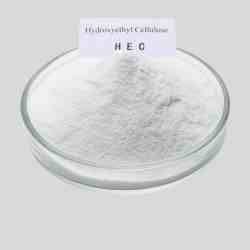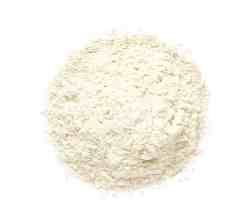Hydroxyethylcellulose (HEC) is a versatile, plant-derived ingredient used widely in cosmetics, skincare, haircare, and even pharmaceutical and industrial products. It’s a type of water-soluble polymer made from cellulose, which comes from plant fiber (like wood or cotton).
Here’s your complete guide to its uses and benefits, especially for DIY and cosmetic formulations.
What is Hydroxyethylcellulose (HEC)?
HEC is a non-ionic, water-soluble thickener and film-former. It comes as a fine white powder and forms a clear or slightly hazy gel when mixed with water.
It’s popular because it’s:
-
Gentle on skin
-
Compatible with a wide range of ingredients
-
Vegan and biodegradable
USES of Hydroxyethylcellulose
1. Thickener and Gelling Agent
-
Used to thicken lotions, creams, gels, shampoos, and cleansers.
-
Creates smooth, silky gels and creamy textures.
2. Emulsion Stabilizer
-
Helps keep oil and water phases from separating.
-
Enhances stability in emulsions (lotions, conditioners).
♀️ 3. Hair Care Products
-
Used in shampoos, conditioners, and styling gels to improve texture and consistency.
-
Adds a light film-forming property for frizz control and softness.
4. DIY & Natural Formulations
-
Great for aloe gels, hydrating serums, natural shampoos, and water-based leave-ins.
5. Pharmaceutical and Medical Use
-
Used in eye drops, gels, and topical medications as a thickening, soothing base.
✅ BENEFITS of Hydroxyethylcellulose
1. Non-Irritating and Gentle
-
Ideal for sensitive skin, baby products, and natural/clean beauty lines.
-
Doesn’t clog pores or cause breakouts.
2. Excellent Thickening Ability
-
Provides a silky, smooth texture without stickiness.
-
Works across a wide pH range (great for both acidic and alkaline formulas).
3. Plant-Based & Biodegradable
-
Derived from natural cellulose.
-
Eco-friendly alternative to synthetic thickeners.
✨ 4. Clear Gel Base
-
Perfect for creating crystal clear gels (e.g., aloe vera gel, facial serums, hair gels).
5. Compatible with Many Actives
-
Stable with electrolytes, botanical extracts, surfactants, acids, and more.
-
Can be used alongside glycerin, hyaluronic acid, niacinamide, etc.
Usage Rate & Formulation Tips
| Product Type | Typical Usage Rate | Function |
|---|---|---|
| Gels (face/hair) | 0.5% – 1.5% | Thickening & film forming |
| Lotions & Creams | 0.1% – 1% | Stabilizer & texture |
| Shampoos & Cleansers | 0.3% – 1% | Viscosity enhancer |
| Serums | 0.2% – 0.7% | Lightweight gelling agent |
⚠️ How to use: Disperse the powder in room-temp water while stirring constantly to avoid clumps. Then allow it to fully hydrate (often takes 1–2 hours) before heating or blending with other ingredients.
DIY Example: Simple Aloe Gel
Ingredients:
-
90% Distilled Water
-
5% Aloe Vera Powder (or Juice)
-
0.8% Hydroxyethylcellulose
-
3% Glycerin
-
1% Preservative (e.g., Geogard or Optiphen) OR OTHER PRESERVATIVES IN AUSTACS WEBSITE
-
0.2% Essential Oil (optional, like lavender or rosemary)
Instructions:
-
Sprinkle HEC slowly into water, stirring constantly to prevent clumping.
-
Let it hydrate fully (can take 1–2 hours).
-
Add remaining ingredients and blend well.
-
Bottle in a clean container.
✅ Result: A lightweight, non-sticky, SOOTHING gel




Reviews
There are no reviews yet.